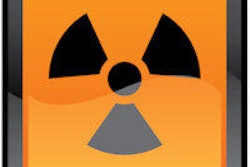Dear Advanced Visualization Insider,
Dutch researchers broke new ground in the evaluation of lung computer-aided detection (CAD) schemes when they decided to compare several state-of-the-art CAD systems on the largest validated database of lung nodules around -- that is, the U.S. Lung Image Database Consortium/Image Database Resource Initiative.
Most CAD systems do a good job of finding suspicious nodules that radiologists may have missed, with accompanying low false-positive rates. Still, awareness of the varying reliability of different CAD algorithms is crucial to properly evaluate and benchmark system performance, they cautioned. How did the various algorithms stack up? Find out here.
The results are also in for another real-life application of advanced imaging technology, from a multicenter study of chest pain patients that was conducted on nearly 600 patients in 11 European centers. The investigators aimed to determine if the use of noninvasive fractional flow reserve CT (FFRCT) analysis could reduce the number of invasive angiographies.
FFRCT certainly did that, reducing the number of negative invasive angiographies by a whopping 73%, according to the presentation at London's European Society of Cardiology 2015 meeting in September. Learn more about the coronary blood flow analysis approach in our story.
Given these studies alone, one could surmise that advanced visualization has a bright future ahead. This is coincidentally the subject of a new market report predicting double-digit growth for the sector.
Meanwhile, 3D imaging made the headlines at this month's French national radiology congress. During the construction of a new congress center in Rennes, the site yielded nearly 1,000 graves from between the 14th and 18th centuries, and CT was used to study the remains, delegates learned. Get the story here.
In more news from the Netherlands, investigators in Utrecht have built an automated coronary artery calcium scoring algorithm. The test, which has become a key step in assessing the risk of coronary artery disease, is fast and accurate, allowing faster and larger-scale coronary artery calcium testing for trials and more.
We invite you to scroll through the links below for the rest of the news in advanced visualization and 3D -- right here in your AuntMinnieEurope.com Advanced Visualization Community.



















